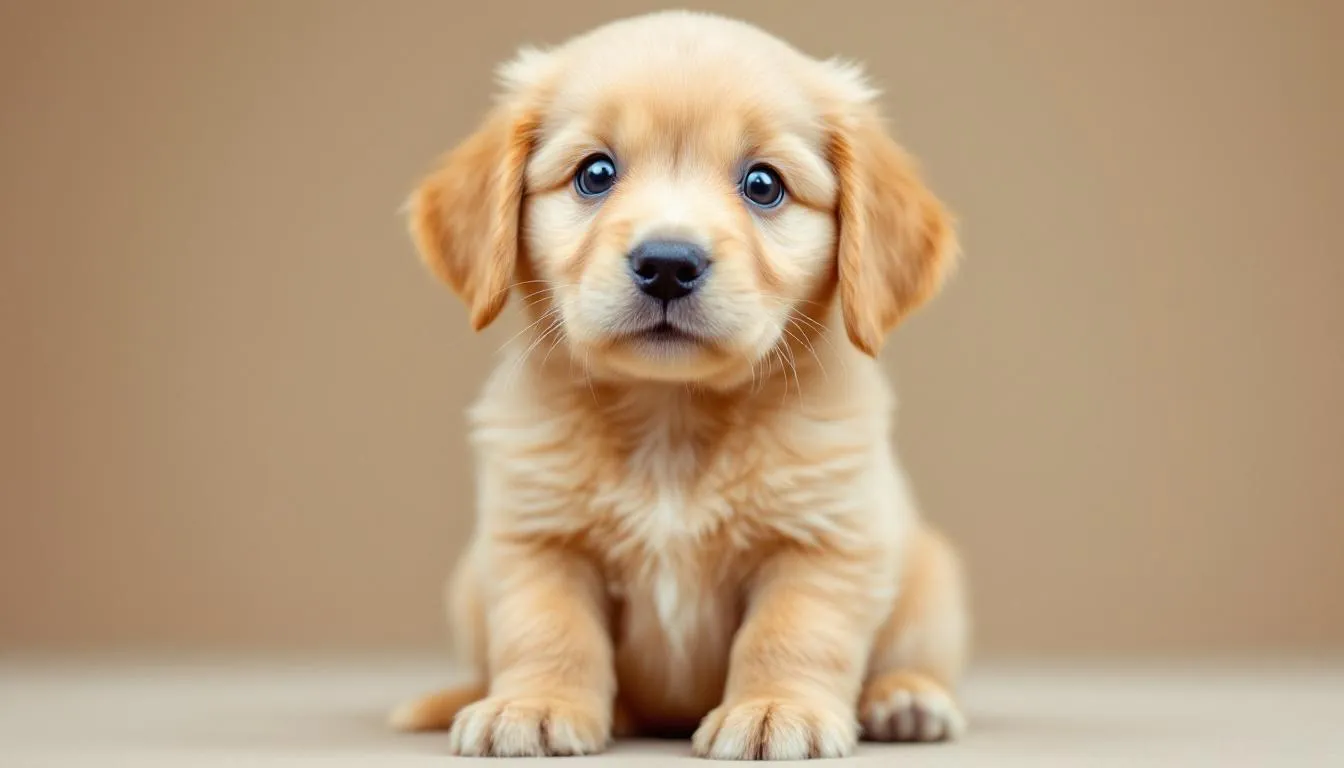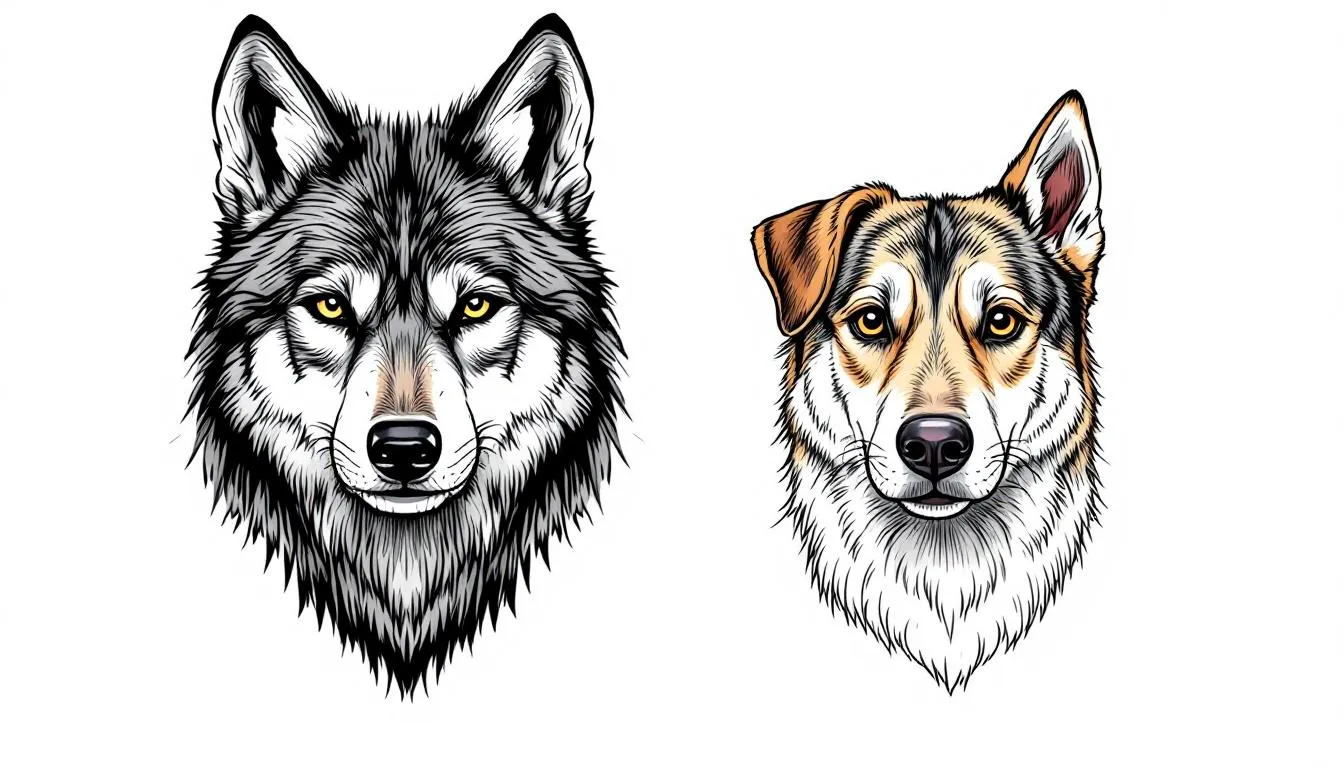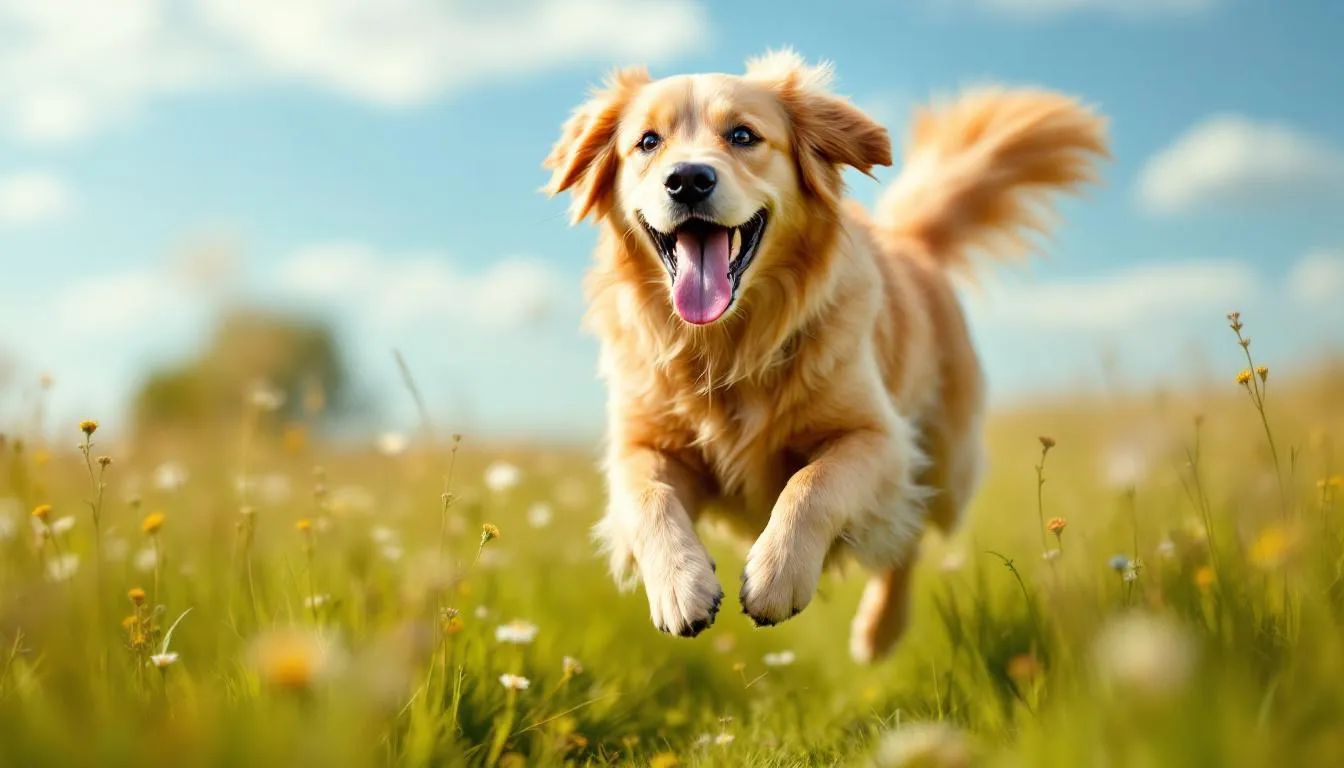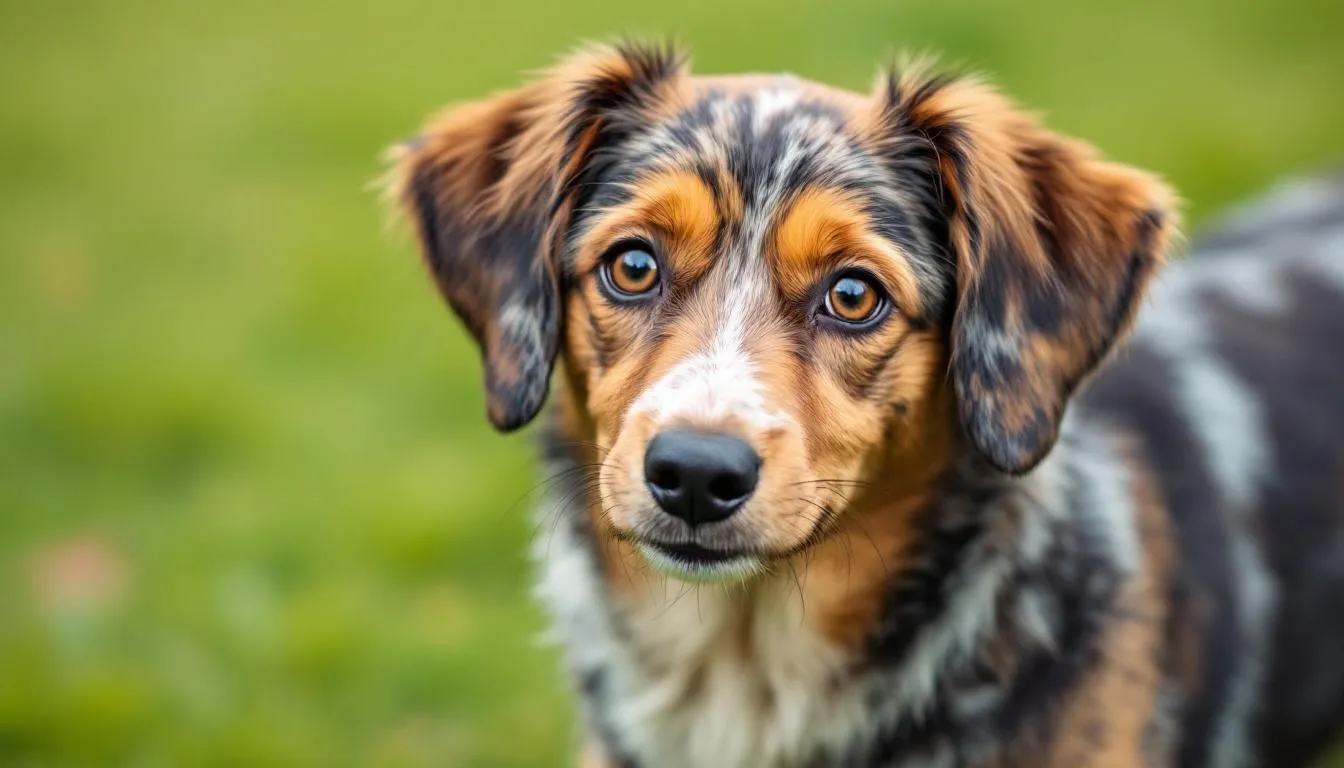Introduction to the Phenomenon
Have you ever wondered why your own furry companions seem to melt your heart with just a glance? The phenomenon of dog cuteness has fascinated human beings for centuries, and it’s no accident that so many of us find dogs utterly irresistible. Much of this appeal comes from the child-like characteristics that dogs display—think big eyes, soft fur, floppy ears, and chubby cheeks. These features trigger nurturing instincts in humans, a response rooted in what scientists call the baby schema effect. This effect explains why we find certain physical traits, like large heads and round faces, so adorable—they remind us of human babies and activate our natural caregiving responses.
Dogs don’t just look cute; their playful behavior and affectionate personalities make them beloved members of many families. Pet owners often refer to their dogs as “fur babies,” highlighting the deep emotional connection and sense of responsibility they feel. Beyond their looks, dogs provide invaluable social and emotional support, offering comfort, companionship, and unconditional love. It’s no wonder that for so many people, their furry companions are truly part of the family.
Key Takeaways
- Dogs trigger our baby schema response with features like big eyes, round faces, and soft fur that activate nurturing instincts
- Interactions with cute dogs release oxytocin and dopamine, creating powerful emotional bonds and feelings of happiness
- Thousands of years of selective breeding have enhanced dogs’ cute traits to appeal to human preferences
- Adorable behaviors like head tilts, playfulness, and expressive eyes strengthen the human-dog connection
- The psychological response to dog cuteness provides mental health benefits including reduced stress and increased social support
Dogs trigger our baby schema response with features like big eyes, round faces, and soft fur that activate nurturing instincts
Interactions with cute dogs release oxytocin and dopamine, creating powerful emotional bonds and feelings of happiness
Thousands of years of selective breeding have enhanced dogs’ cute traits to appeal to human preferences
Adorable behaviors like head tilts, playfulness, and expressive eyes strengthen the human-dog connection
The psychological response to dog cuteness provides mental health benefits including reduced stress and increased social support
You see a Golden Retriever puppy with oversized paws, floppy ears, and those impossibly large eyes gazing up at you, and something happens. Your heart rate slows, a smile spreads across your face, and you feel an overwhelming urge to protect and nurture this little creature. This isn’t just emotional weakness—it’s science.
The question of why dogs are so cute has captivated researchers for decades, leading to fascinating discoveries about biology, evolution, and human psychology. From the specific facial features that trigger our protective instincts to the hormonal cascades that create unbreakable bonds, there’s a complex scientific explanation for why we love dogs so intensely.
Understanding why we find our furry companions so irresistible reveals not just the mechanics of cuteness, but the remarkable story of how two species evolved together to create one of nature’s most successful partnerships. Let’s explore the biological, evolutionary, and psychological forces that make dogs the cutest creatures on Earth.


The Biological Science Behind Dog Cuteness
The foundation of dog cuteness lies in a powerful biological concept called baby schema, or Kinderschema, first identified by ethologist Konrad Lorenz in the 1940s. This theory explains why certain physical features and aspects of physical appearance automatically trigger nurturing responses in humans—an evolutionary adaptation that ensures we care for our young.
Baby schema encompasses specific traits that signal youth and vulnerability: large heads relative to body size, big round eyes positioned low on the face, chubby cheeks, short noses, and soft textures. When we encounter these features, our brains interpret them as “baby” and activate ancient caregiving circuits that have kept human babies alive for millennia. Evolutionary biology suggests that humans are naturally drawn to cute things, as these features evoke protective and nurturing instincts.
Dogs have evolved to exploit this biological loophole perfectly. Their large eyes create the impression of innocence and need, while their round faces mirror the proportions of human babies. The soft fur texture invites touch and provides comfort, reinforcing our desire to stay close and provide care. Even their short noses and slightly receding chins echo the facial structure that makes human infants so appealing.
Certain breeds exemplify baby schema more dramatically than others. French Bulldogs with their enormous eyes and flat faces, Pugs with their wrinkled foreheads and prominent eyes, and Golden Retriever puppies with their soft features and gentle expressions all trigger maximum cuteness responses. These breeds didn’t develop these traits by accident—selective breeding has amplified the very characteristics that make humans want to care for them.
Hormonal Responses to Cute Dogs
The biological response to cute dogs involves a complex cocktail of hormones that create genuine physiological changes in both humans and dogs. When we interact with our furry companions, our bodies release oxytocin—often called the “love hormone”—at levels that rival romantic relationships and parent-child bonds.
Research shows that mutual gazing between humans and dogs increases oxytocin levels by up to 300% in humans and 130% in dogs. This creates a feedback loop where both species feel increasingly bonded and motivated to continue the interaction. The same neural pathways activated when parents look at their babies light up when we gaze into the eyes of cute dogs.
Dopamine, the neurotransmitter associated with pleasure and reward, also floods our systems when we see adorable dogs. This explains why scrolling through cute dog videos feels genuinely rewarding and why many people find it difficult to resist petting every dog they encounter. The brain literally treats cute dogs as a reward, encouraging us to seek out more interactions.
The hormonal response is so powerful that even viewing photos or videos of cute dogs can trigger measurable changes in stress hormones like cortisol. Studies show that people experience reduced anxiety and improved mood after just five minutes of looking at images of baby animals, with puppies ranking among the most effective at producing these benefits.
The Baby Schema Effect on Human Perception
The baby schema effect is a powerful force in shaping how humans perceive cute dogs. When we see physical characteristics like large eyes, round faces, and soft features in dogs, our brains instantly associate them with human babies. This triggers a caregiving response, releasing oxytocin—the “love hormone”—which strengthens the emotional bond between humans and their pets. It’s the same biological mechanism that makes us want to cuddle and protect babies, and it works just as effectively on our canine friends.
While other animals, such as cats and kittens, can also display baby schema features and appear adorable to humans, dogs have a special knack for capturing our hearts. Their loyal and affectionate nature, combined with these irresistible physical traits, makes them stand out as some of the cutest animals around. The baby schema effect helps explain why so many people are drawn to cute dogs and why dogs have become one of the most popular pets worldwide. Whether it’s a puppy’s big, soulful eyes or a senior dog’s gentle expression, these features tap into our deepest nurturing instincts and make us feel an instant connection.


Evolution and Selective Breeding for Cuteness
The story of why dogs are so cute begins approximately 14,000 years ago when early humans first began domesticating wolves. This wasn’t just about taming wild animals—it was the beginning of a co-evolutionary process that would fundamentally reshape both species. Through this process, humans share deep emotional and social bonds with dogs, developed over generations of selective breeding and domestication.
Archaeological evidence suggests that humans consistently chose to breed dogs with more appealing, less threatening characteristics. Animals with shorter snouts, smaller teeth, floppy ears, and more expressive faces were more likely to be kept, fed, and allowed to reproduce. Over thousands of generations, this “survival of the cutest” created dogs that looked and behaved increasingly different from their wolf ancestors.
The process accelerated dramatically during the Victorian era when formal dog breeding became popular. Breeders explicitly selected for traits that enhanced the human-dog bond, including larger eyes, more expressive facial muscles, and behaviors that mimicked human emotional displays. The development of specific breeds like the Cavalier King Charles Spaniel, with their enormous eyes and gentle expressions, represents the pinnacle of breeding for maximum cuteness appeal.
Modern research has revealed fascinating anatomical changes that occurred during domestication. Dogs developed facial muscles that wolves lack, specifically the muscle responsible for raising the inner eyebrow. This creates the “puppy dog eyes” expression that makes dogs appear sad or pleading—an expression that humans find nearly impossible to resist.
Shelter data provides compelling evidence for the continued evolution of cuteness. Dogs that frequently display raised eyebrows and wider-eyed expressions are adopted an average of several days sooner than those with less expressive faces. Even today, the cutest dogs have a survival advantage in human-dominated environments.


Adorable Dog Behaviors That Melt Our Hearts
Beyond physical features, dogs have evolved a repertoire of behaviors specifically designed to appeal to human emotions. These actions aren’t random—they’re sophisticated communication strategies that have been refined over millennia of living alongside humans.
The famous head tilt behavior serves multiple purposes but has become one of the most endearing dog expressions. When dogs tilt their heads, they’re often trying to better localize sounds or get a clearer view around their muzzles. However, humans interpret this behavior as curiosity and attentiveness, finding it absolutely irresistible. Many dogs learn to use head tilts strategically when they want attention or treats.
Tail wagging represents a complex language of emotional expression. Different wag speeds, heights, and directions convey various messages, but the sight of a enthusiastically wagging tail universally signals happiness and friendliness to humans. The helicopter tail wag of excited dogs, where the entire rear end wiggles with enthusiasm, triggers immediate positive responses in most people.
Playful behaviors like the “zoomies”—those sudden bursts of frantic running—demonstrate pure joy in a way that resonates deeply with human beings. Barking, especially when done in a playful or attention-seeking way, is another endearing behavior that many people find cute, as it often signals a dog's desire to connect or interact. When dogs invite play by bowing with their front ends low and rear ends high, they’re using a universal canine play signal that humans instinctively understand as friendly and fun. Playing tug of war and fetch behaviors satisfy our desire for interaction while showcasing the dog’s willingness to engage with us as partners.
Perhaps most manipulative of all are the facial expressions dogs have learned to make. The “puppy dog eyes” phenomenon involves raising the inner eyebrows to make the eyes appear larger and more expressive. Research shows that dogs produce this expression more frequently and intensely when humans are looking at them, suggesting they understand its effect on us.
The Psychology of Cute Behaviors
The question of whether cute behaviors are instinctual or learned manipulation tactics reveals the sophisticated nature of dog intelligence. Dogs possess remarkable abilities to read human emotions and adjust their behavior accordingly, suggesting that many “cute” actions are purposeful attempts at communication. Dogs also communicate their own feeling—such as contentment, distress, or the desire for affection—through body language, vocalizations, and facial expressions, allowing humans to better understand and respond to their emotional states.
Dogs have evolved facial muscles specifically for human communication that their wolf ancestors lack. This anatomical adaptation allows for the subtle facial expressions that make dogs appear more emotionally expressive than other animals. The muscle responsible for raising the inner eyebrow exists in nearly all domestic dogs but is largely absent in wolves, representing a clear evolutionary adaptation for living with humans.
The emotional responses these behaviors trigger in humans serve both species well. When a dog performs belly rubs invitations, offers gentle pawing for attention, or produces soft whining sounds, they’re accessing deep-seated human nurturing instincts. Our brains interpret these signals as requests for care and protection, strengthening the bond that benefits both dog and human.
Research indicates that dogs can read human facial expressions and adjust their behavior based on our emotional states. They’re more likely to perform attention-seeking cute behaviors when humans appear sad or distressed, suggesting an understanding of how their actions affect our emotions. This emotional intelligence makes the human-dog relationship uniquely reciprocal among human-animal bonds.
The Impact of the Baby Schema Effect on Human Behavior
The baby schema effect doesn’t just shape how we see dogs—it also influences how we behave around them. When we encounter dogs with features like soft fur, large eyes, and round faces, we’re naturally drawn to interact with them in affectionate and playful ways. This is why so many people can’t resist giving belly rubs, playing tug of war, or simply cuddling up with their dogs. These activities aren’t just fun; they’re a direct result of the caregiving response triggered by the baby schema effect.
This effect also deepens our emotional connection to our dogs, making us feel more affectionate and nurturing. The simple act of looking into a dog’s big, expressive eyes can make us feel happier and more relaxed, while their adorable features encourage us to provide the care and attention they need. The baby schema effect helps explain why dogs are such effective companions for humans, inspiring us to form strong bonds and prioritize their well being. Whether it’s through playful behavior or quiet moments of affection, the cuteness of dogs has a profound impact on our emotions and daily lives.


Physical Features That Define Dog Cuteness
The specific physical characteristics that make dogs adorable follow predictable patterns rooted in baby schema theory. Floppy ears, for instance, appear less threatening than erect ears while maintaining the soft, rounded appearance that triggers protective responses. Button noses and shortened snouts create facial proportions similar to human infants, while fluffy coats invite touch and physical contact. For many people, the 'cutest thing' about a dog is often its big, expressive eyes or the way its ears flop when it runs.
Different breeds showcase various cute characteristics that appeal to different human preferences. Labradors combine moderate features—not too extreme in any direction—with expressive eyes and friendly facial expressions. Beagles possess the perfect combination of large eyes, floppy ears, and compact size that makes them appear perpetually youthful. Pomeranians take the opposite approach, with their tiny size and enormous coat creating a “living teddy bear” effect.
The appeal of puppy proportions versus adult dog features reveals important insights about human preferences. Puppies possess exaggerated baby schema traits: disproportionately large heads, oversized paws they haven’t grown into, and eyes that seem too big for their faces. As dogs mature, these proportions normalize, but breeds that retain more puppy-like features throughout their lives tend to be perceived as cuter.
Coat texture and color significantly influence perceived cuteness. Soft, fluffy coats invite touching and provide tactile comfort that enhances bonding. Colors also matter—lighter colors often appear more innocent and baby-like, while certain patterns like the white blaze on a dog’s face can enhance the appearance of large eyes and facial symmetry.
Size factors play a crucial role in cuteness perception. Smaller dogs often trigger stronger protective responses because they appear more vulnerable and child-like. However, large dogs can also be extremely cute when they maintain baby-like proportions—the sight of a massive dog with gentle eyes and soft expressions creates an appealing contrast between size and temperament.
The Role of Nurturing Instincts and Dog Care
Nurturing instincts are at the heart of the special relationship between humans and dogs. Thanks to the baby schema effect, dogs appear cute and vulnerable, prompting a strong caregiving response in their owners. This instinct drives many pet owners to go above and beyond in providing the best possible care for their dogs—ensuring they have a comfortable home, nutritious food, regular exercise, and plenty of affection.
In return, dogs offer their owners unwavering companionship, affection, and emotional support. They become trusted friends and valued family members, always ready to provide comfort after a long day or celebrate life’s joyful moments. The bond between humans and dogs is built on mutual trust and love: dogs rely on their owners for protection and care, while owners depend on their dogs for emotional support and a sense of belonging. This reciprocal relationship is a testament to the power of nurturing instincts and the deep connection that forms when we care for our pets as cherished members of the family.
The Mental Health Benefits of Dog Cuteness
The therapeutic power of cute dogs extends far beyond momentary happiness. Viewing and interacting with adorable dogs creates measurable improvements in mental health through multiple biological and psychological mechanisms. The stress-reduction benefits occur almost immediately—cortisol levels drop within minutes of petting a dog, while blood pressure and heart rate stabilize.
Dogs serve as remarkable social mediators in human interactions. Their presence makes social situations more comfortable and provides natural conversation starters. For people struggling with social anxiety or depression, dogs offer non-judgmental companionship and opportunities for positive social interactions. The unconditional love dogs provide creates a sense of being needed and valued that supports emotional well being.
The therapeutic benefits have led to widespread use of dogs in formal mental health treatment. Therapy dogs in hospitals, schools, and counseling centers provide emotional support that complements traditional treatments. The presence of a cute, calm dog can reduce anxiety in medical settings, improve focus in educational environments, and provide comfort during difficult therapeutic processes.
Research consistently shows that pet owners report better overall mental health, increased physical activity, and stronger social connections. The daily care routines required for dogs create structure and purpose, while the guaranteed positive interactions provide reliable sources of joy and affection. Many pet owners describe their dogs as helpful social mediators who facilitate connections with neighbors and other dog owners.
For individuals dealing with trauma, depression, or anxiety, the predictable cuteness and affection of dogs can provide stability and hope. The simple act of watching a dog’s tail wag or receiving gentle attention-seeking behaviors can interrupt negative thought patterns and provide moments of genuine happiness.


Why Some Dogs Appear Cuter Than Others
Individual preferences for dog cuteness vary significantly based on personal experiences, cultural background, and psychological factors. Some people find the extreme baby schema traits of flat-faced breeds irresistible, while others prefer the more natural proportions of working breeds. These preferences often reflect childhood experiences, family traditions, or specific emotional associations with certain types of dogs.
Cultural differences play a significant role in defining cute dog standards. While baby schema triggers universal responses, specific breed preferences vary globally. Some cultures value loyalty and working ability over pure aesthetics, leading to different definitions of what makes dogs appealing. Social media and popular culture also influence perceptions, with certain breeds becoming trendy based on their photogenic qualities.
Personal experiences significantly shape our cute preferences. Someone who grew up with a beloved family pet may find similar-looking dogs particularly appealing, while negative experiences might reduce the cute factor of certain breeds or characteristics. The emotional associations we form with specific dogs influence how we perceive entire breeds or types.
Media representation plays an increasingly important role in defining cute dog standards. Social media platforms reward the most photogenic and video-friendly dogs, potentially skewing public perception toward breeds and individuals that perform well in digital formats. This can create feedback loops where certain types of cuteness become more valued and sought after.
The wonderful truth is that every dog possesses unique cute qualities when viewed through the lens of love and familiarity. Own furry companions often appear exceptionally cute to their families regardless of how they might rank on objective cuteness scales, demonstrating how emotional bonds enhance our perception of adorable traits.
FAQ
Are puppies actually cuter than adult dogs, or is it just perception?
Puppies are objectively designed to be cuter than adult dogs due to exaggerated baby schema traits—disproportionately large heads, oversized eyes, and soft features that trigger maximum nurturing responses. However, the perception of cuteness also depends on familiarity and emotional attachment. Many pet owners find their adult dogs equally or more cute than puppies because of the deep bonds formed over years of companionship.
Do dogs know they’re being cute when they perform certain behaviors?
Dogs don’t consciously think “I’m being cute,” but they absolutely learn which behaviors get positive responses from humans. They’re remarkably skilled at reading human emotions and will repeat actions that result in attention, treats, or affection. The “puppy dog eyes” expression, for example, is produced more frequently when humans are watching, suggesting dogs understand its effect even if they don’t conceptualize it as “cuteness.”
Why do some people find certain dog breeds cuter than others?
Breed preferences reflect a combination of biological responses to baby schema traits, personal experiences, and cultural influences. Some people prefer extreme cute features (like pugs with very large eyes), while others favor more moderate traits (like golden retrievers). Past experiences with specific breeds, family traditions, lifestyle considerations, and even media exposure all influence which dogs we find most appealing.
Can the cuteness response to dogs be measured scientifically?
Yes, researchers can measure cuteness responses through multiple methods including hormone level testing (oxytocin and dopamine), brain imaging to observe activated neural pathways, heart rate and blood pressure monitoring, and behavioral observations. Studies consistently show measurable physiological changes when people interact with or even view images of cute dogs, proving that cuteness triggers genuine biological responses.
Do male and female dogs display different types of cute behaviors?
While individual personality matters more than gender, some research suggests subtle differences in cute behavior patterns. Female dogs may engage in more nurturing-type behaviors and gentle attention-seeking, while male dogs might use more playful or dramatic gestures to get attention. However, socialization, training, and individual temperament have much greater influence on cute behavior than biological sex.
FAQ
Are puppies actually cuter than adult dogs, or is it just perception?
Puppies are objectively designed to be cuter than adult dogs due to exaggerated baby schema traits—disproportionately large heads, oversized eyes, and soft features that trigger maximum nurturing responses. However, the perception of cuteness also depends on familiarity and emotional attachment. Many pet owners find their adult dogs equally or more cute than puppies because of the deep bonds formed over years of companionship.
Do dogs know they’re being cute when they perform certain behaviors?
Dogs don’t consciously think “I’m being cute,” but they absolutely learn which behaviors get positive responses from humans. They’re remarkably skilled at reading human emotions and will repeat actions that result in attention, treats, or affection. The “puppy dog eyes” expression, for example, is produced more frequently when humans are watching, suggesting dogs understand its effect even if they don’t conceptualize it as “cuteness.”
Why do some people find certain dog breeds cuter than others?
Breed preferences reflect a combination of biological responses to baby schema traits, personal experiences, and cultural influences. Some people prefer extreme cute features (like pugs with very large eyes), while others favor more moderate traits (like golden retrievers). Past experiences with specific breeds, family traditions, lifestyle considerations, and even media exposure all influence which dogs we find most appealing.
Can the cuteness response to dogs be measured scientifically?
Yes, researchers can measure cuteness responses through multiple methods including hormone level testing (oxytocin and dopamine), brain imaging to observe activated neural pathways, heart rate and blood pressure monitoring, and behavioral observations. Studies consistently show measurable physiological changes when people interact with or even view images of cute dogs, proving that cuteness triggers genuine biological responses.
Do male and female dogs display different types of cute behaviors?
While individual personality matters more than gender, some research suggests subtle differences in cute behavior patterns. Female dogs may engage in more nurturing-type behaviors and gentle attention-seeking, while male dogs might use more playful or dramatic gestures to get attention. However, socialization, training, and individual temperament have much greater influence on cute behavior than biological sex.






